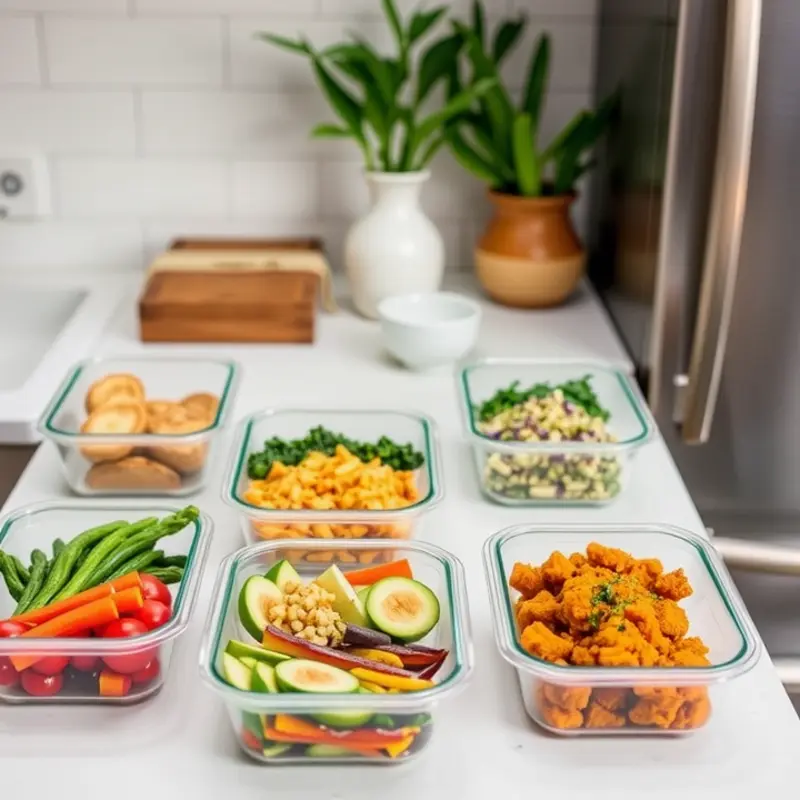Eating nutritious meals on a budget is not only possible but also rewarding. With a little creativity and planning, anyone can maintain a healthy diet without breaking the bank. This guide offers practical tips that empower beginners in nutrition to make smart food choices while keeping costs low. You’ll discover budget-friendly staples, meal planning techniques, and cooking strategies that will not only enhance your health but also your culinary skills.
Smart Shopping: How to Fill Your Cart Wisely

When it comes to grocery shopping on a budget, making smart choices is essential. One of the first steps is focusing on whole foods, which are not only nutritious but often more affordable. Whole foods include items like fresh fruits, vegetables, and grains. Whenever possible, choose these over processed foods, which can be more expensive and often contain unhealthy additives.
Sales are another powerful tool for the budget-conscious shopper. Keep an eye on weekly flyers and digital coupons from your local stores. Stock up on non-perishable items like canned goods or dry pasta when they are on sale. Buying in bulk can also save money, but only if you have the space to store these items and the discipline to use them before they expire.
Creating a shopping list is an underrated yet impactful strategy to prevent impulse buys and stick to your budget. Before hitting the store, plan your meals for the week and list only the items you need. This not only reduces the chance of purchasing unnecessary snacks but also helps avoid food waste. For tips on efficient meal preparation that could make shopping lists even more effective, consider learning about minimal prep dinner ideas.
Understanding the labels and prices per unit on grocery products can offer significant savings. Sometimes larger packages may seem cheaper, but the per-unit cost might be higher than smaller portions. Take time to compare unit prices, especially when deciding between brands or package sizes.
Finally, don’t overlook the power of seasonal produce. Buying fruits and vegetables in season can greatly reduce spending while ensuring maximum flavor and nutrition. Farmers’ markets or local produce vendors often sell seasonal goods at better prices than supermarkets, plus they support local agriculture.
These smart shopping strategies can effectively fill your cart and fuel your body without breaking the bank. By focusing on whole foods, leveraging sales and bulk buys, sticking to a shopping list, comparing unit prices, and opting for seasonal produce, you can nourish yourself affordably.
Meal Planning: Simplifying Healthy Eating

Meal planning is a powerful tool for anyone looking to eat healthily without breaking the bank. By carefully strategizing your meals, you not only save money but also time and stress throughout the week. Let’s dive into the steps to create a budget-friendly meal plan that aligns with your lifestyle.
Start by setting aside an hour each week to plan your meals. Choose recipes that share common ingredients, maximizing their versatility while minimizing waste. For example, a bag of kale can be used in salads, soups, smoothies, and even as a baked side dish. Opting for multifunctional ingredients allows you to stretch your grocery dollars further.
Next, create a shopping list based on your meal plan. Stick to the list to avoid impulse buys, which often lead to overspending and can disrupt your nutrition goals. When choosing ingredients, focus on seasonal produce as they tend to be fresher, more nutritious, and more affordable. Bulk sections are also invaluable for non-perishables like grains and nuts.
Preparation is key to efficient meal planning. Allocate time on weekends or any free day to prep your ingredients. Wash and chop vegetables, portion meat, and cook staples like rice and legumes. Store them safely following these guidelines to avoid food waste.
Batch-cooking is another strategy that complements meal planning. Cook large quantities of dishes like soups or casseroles, which can be divided into portions and frozen for future use. This not only saves time but provides a quick meal option for busy days.
Incorporating leftovers smartly is crucial. Plan for some meals to repurpose leftovers. Roasted chicken can become a delightful chicken salad or a savory filling for tacos. This approach not only reduces waste but also sparks creativity in your culinary adventures.
Regarding snacks, it’s cost-effective to purchase large quantities of staple items and portion them into individual servings. Homemade snacks like trail mix, granola bars, or yogurt with fruit can satisfy cravings without straining your budget.
For those new to meal planning, start small. Plan three to four meals a week and gradually build from there. Flexibility keeps the process from feeling overwhelming and allows for adjustments as you find what works best for you.
Ultimately, the success of meal planning hinges on its alignment with your lifestyle and nutritional needs. With practice, planning meals becomes a seamless part of your routine, offering a nourishing and financially sustainable way to support your health goals.
Final words
Eating well on a budget doesn’t have to be daunting. With smart shopping habits and a little planning, anyone can enjoy nutritious meals without sacrificing quality or taste. By focusing on whole foods, planning your meals, and utilizing seasonal produce, you can nourish your body and save money at the same time. Remember, investing in your health is always a worthwhile expense, and it starts with the meals you prepare for yourself. Start taking these steps today to enhance your diet and embrace a healthier lifestyle.







